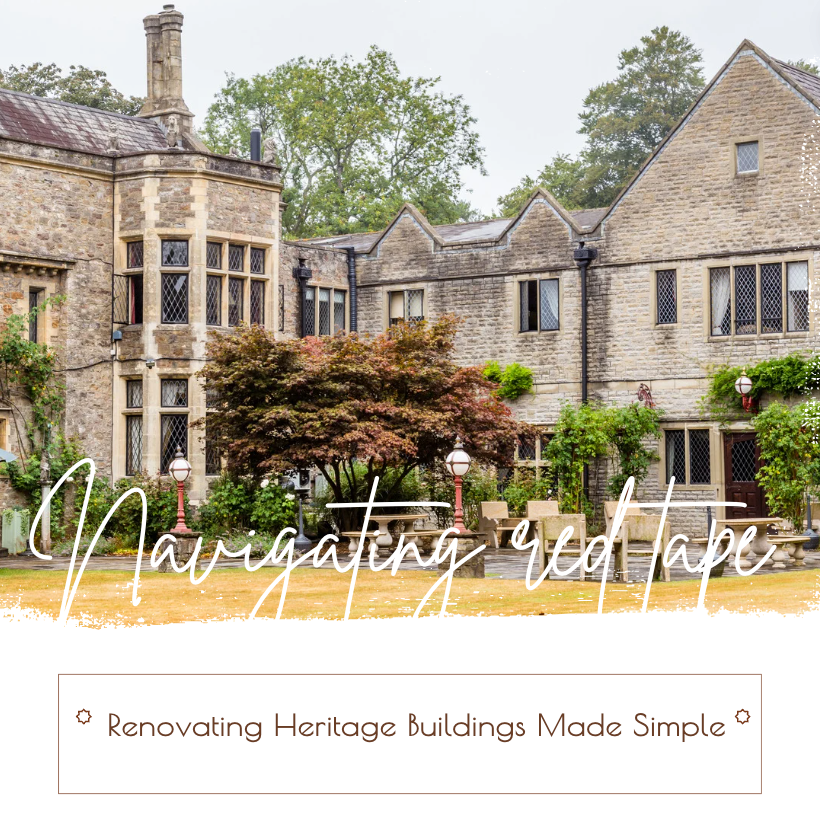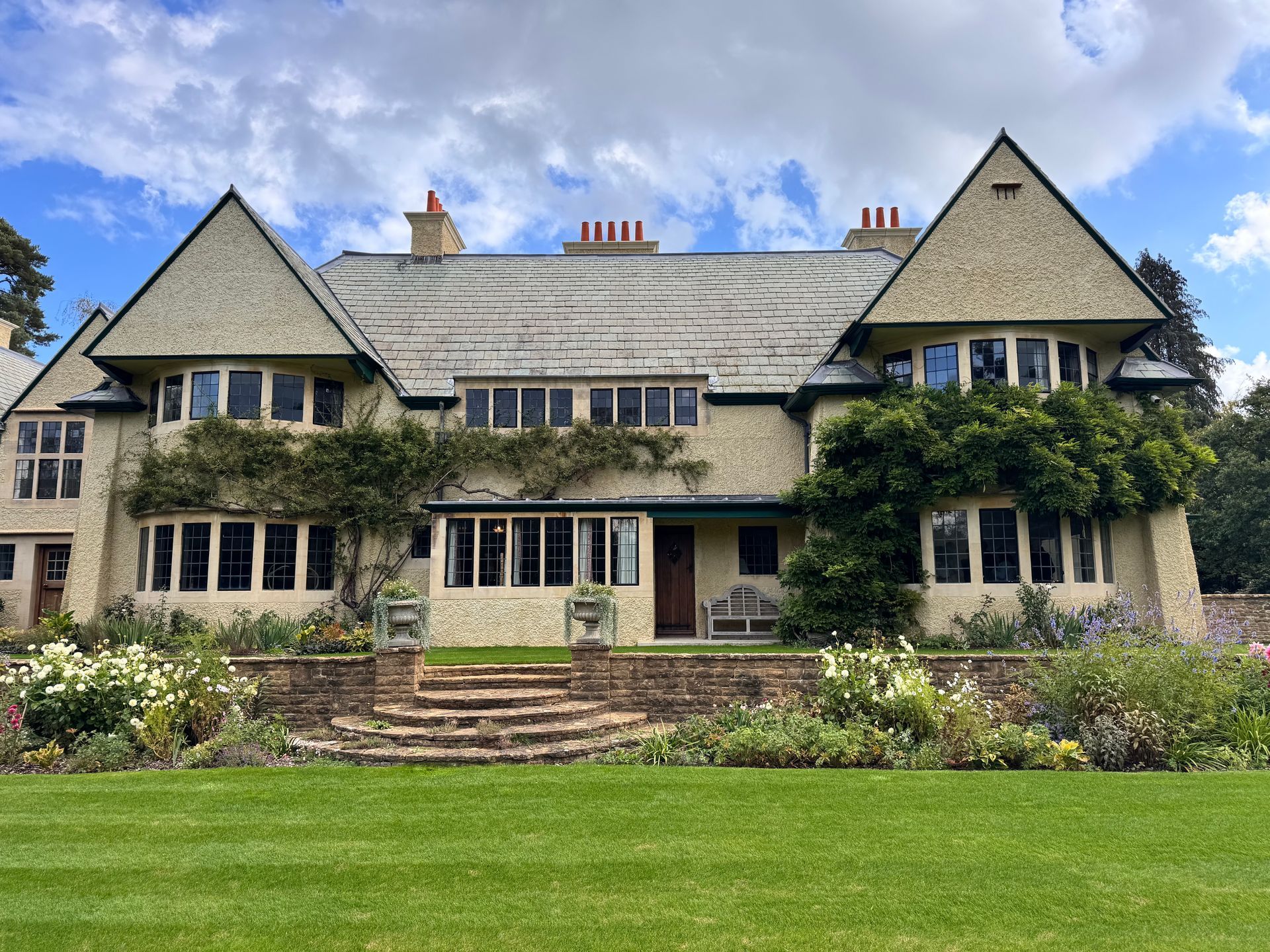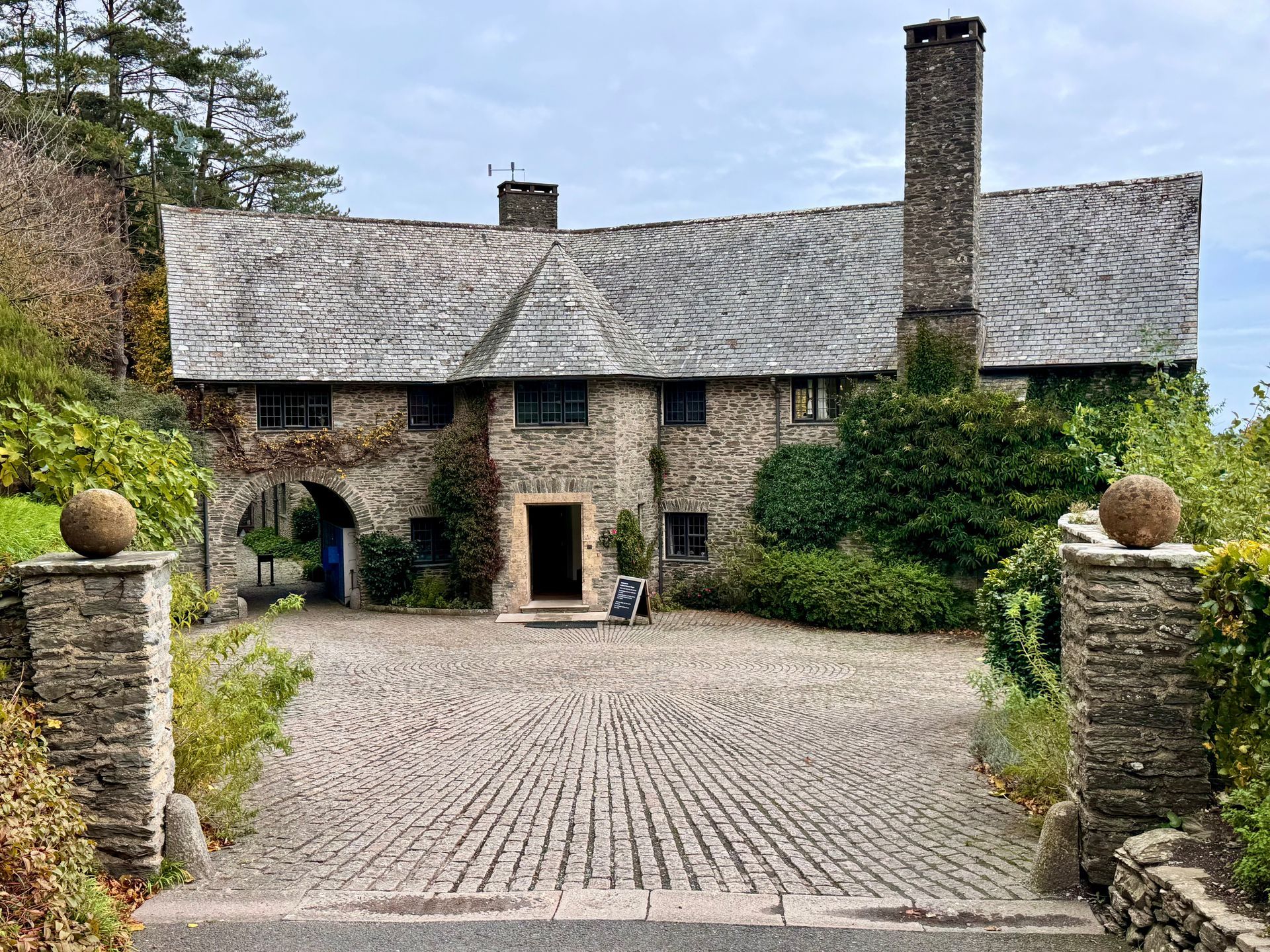Navigating the red tape wrapped around the renovation of heritage buildings
Renovating Heritage Buildings Made Simple

Renovating a heritage building is a unique journey filled with challenges and rewards. When it comes to properties with listed status, understanding the rules and regulations is crucial to ensuring a smooth renovation process.
Here’s what you need to know to navigate the red tape:
1. Understand the Difference: Planning Permission vs. Listed Building Consent
Most building projects will require planning consent from the local planning authority, especially for changes to the structure or use of a building. However, if your property has listed status, you’ll likely also need Listed Building Consent. It's important to note that these are two separate permission processes:
- Planning Permission: Covers general building work or changes to the use of a property.
- Listed Building Consent: Focuses specifically on any alterations that could affect the character or special architectural or historic interest of a listed building.
For some projects, you may need both types of permission. In other cases, only one or neither may be required.
2. Know What Repairs Require Consent
Routine maintenance using traditional materials typically does not require consent unless the work affects the building's character or fabric. However, if you’re unsure, consult with your local planning authority’s conservation officer. They can provide guidance on what is acceptable and help you avoid unnecessary complications.
If your home is listed, anything on your land is also considered listed, even the shed, and so is subject to the same consent.
Listed buildings may be eligible for repair grants from organisations like English Heritage or the Heritage Lottery Fund. Many councils offer a paid consultation service to help you through the process.
3. Balance Preservation with Modern Living
Renovating a heritage building means finding a delicate balance between preservation and adaptation. The goal is to integrate modern conveniences while retaining the historic charm of the property. This often involves making compromises between modern needs, honest restoration practices and safeguarding the building for the future.
Buildings are often listed because they are an integral part of our community and human story. When considering your renovation, it's important to understand the history of your building. Old floor plans, local authority archives and old maps can provide valuable insights into the history of the property. They help uncover the original story and guide the restoration process.
Take the First Step with Confidence
Renovating a heritage building may seem daunting, but with the right knowledge and support, it can be a highly rewarding process. Remember to consult with your local conservation officer, explore funding options, and gather as much historical data as possible to guide your decisions.
If you’re considering renovating a heritage building in Surrey, Hampshire, or Sussex, contact us today - whether you're looking for guidance on how to research your property, want ideas on what you can achieve, or you're looking for an interior designer who works alongside architects specialsing in heritage buildings, helping you to navigate the complexities of heritage renovations inside and out.
We’d love to help bring your vision to life.











